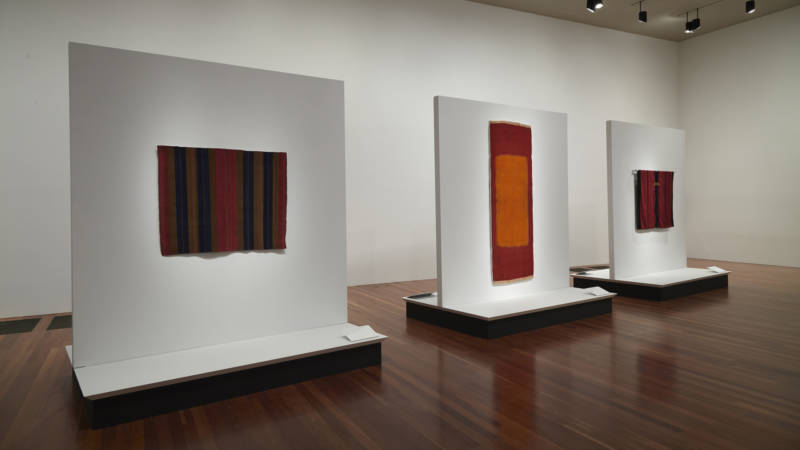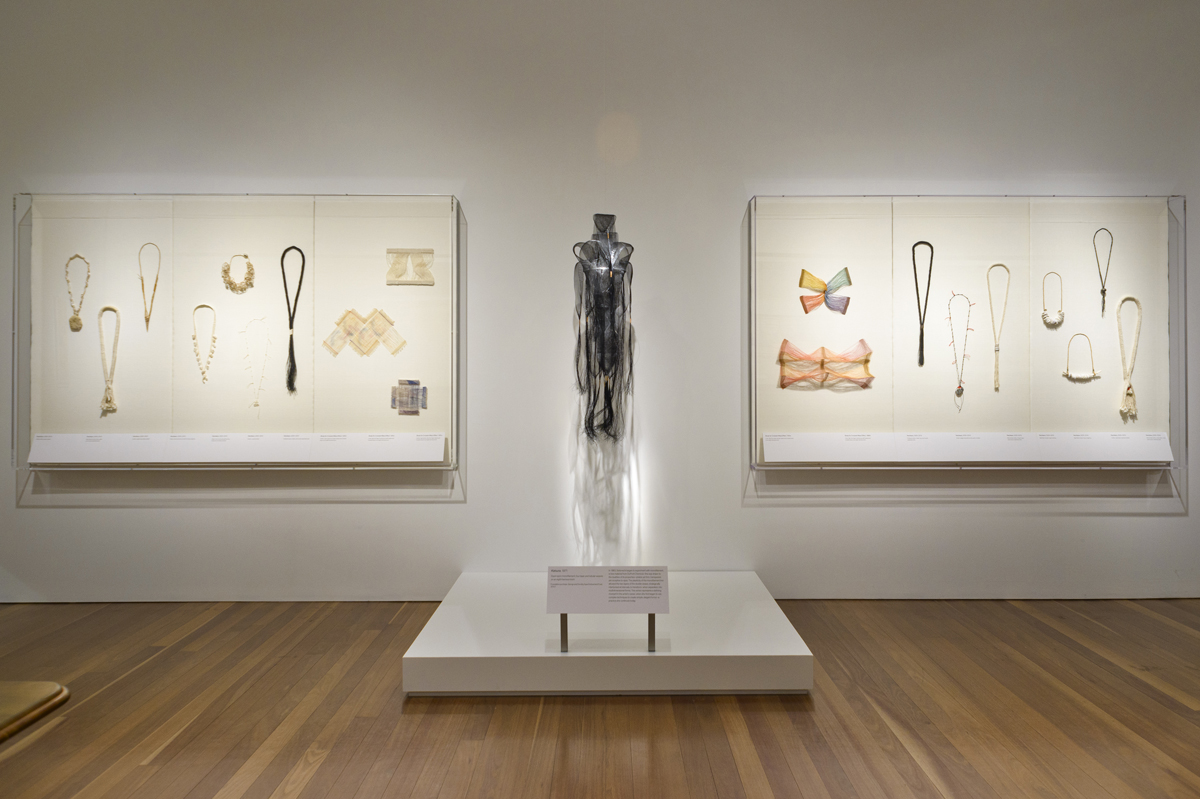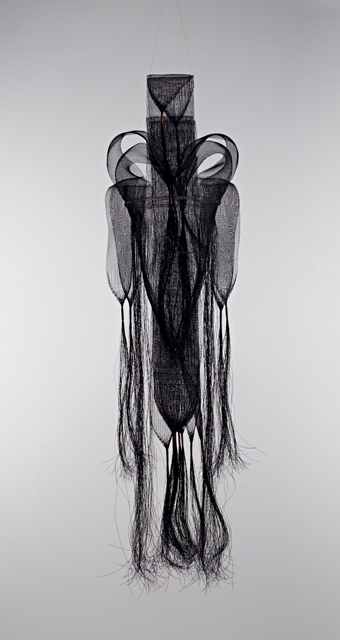“When a textile is following its core principles, it is minimalist,” says Jill D’Alessandro, curator of On the Grid: Textiles and Minimalism, on view at San Francisco’s de Young through Feb. 12, 2017.
The exhibition presents over two dozen textiles from the museum’s permanent collection. Dating from the late 18th century to the present, and made of materials ranging from paper mulberry bark to sheep’s wool to silk, these quilts, tunics, ceremonial shawls, altar cloths and contemporary pieces are unified by minimalist aesthetics. Free of ornamentation, the composition of each was preconceived by the artist and dictated by regular, symmetrical or gridded arrangements.
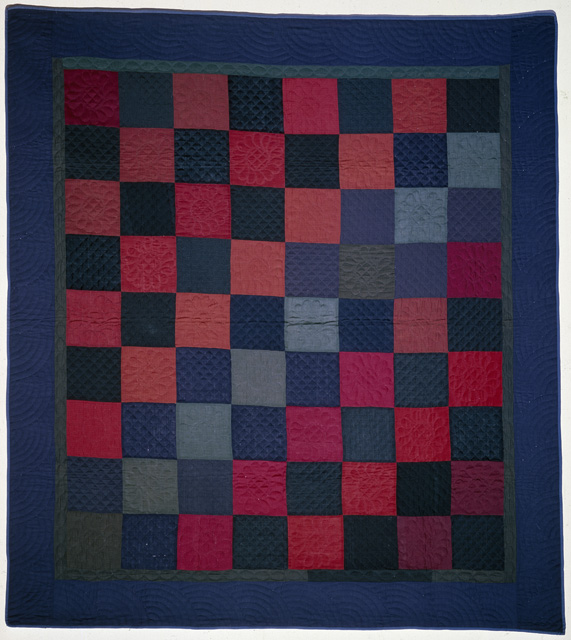
The inventive installation of the exhibition enhances a viewer’s experience; grouped by a progression of color — from reds and oranges to chocolatey browns to cooler blues and whites — many of the textiles hang from displays that expose both their front and back sides. Thanks to this presentation, we can look through them as much as at them; we can imagine them swaying, sense their weight and how they might bunch when wrapped. We can decipher which are translucent, and which are dense enough to inhibit the passage of light.
D’Alessandro calls Rebecca R. Medel’s Wall of Windows, a ghostly, 106-inch-tall cotton and linen piece dominating one end of the gallery, “a phenomenal feat,” given its “extremely mathematically challenging” approach to combining knotted netting with double-ikat dyeing. “My work is about the spiritual, about infinity,” Medel says. One indeed feels this cosmic push, staring into the intricate layers of the commanding piece.
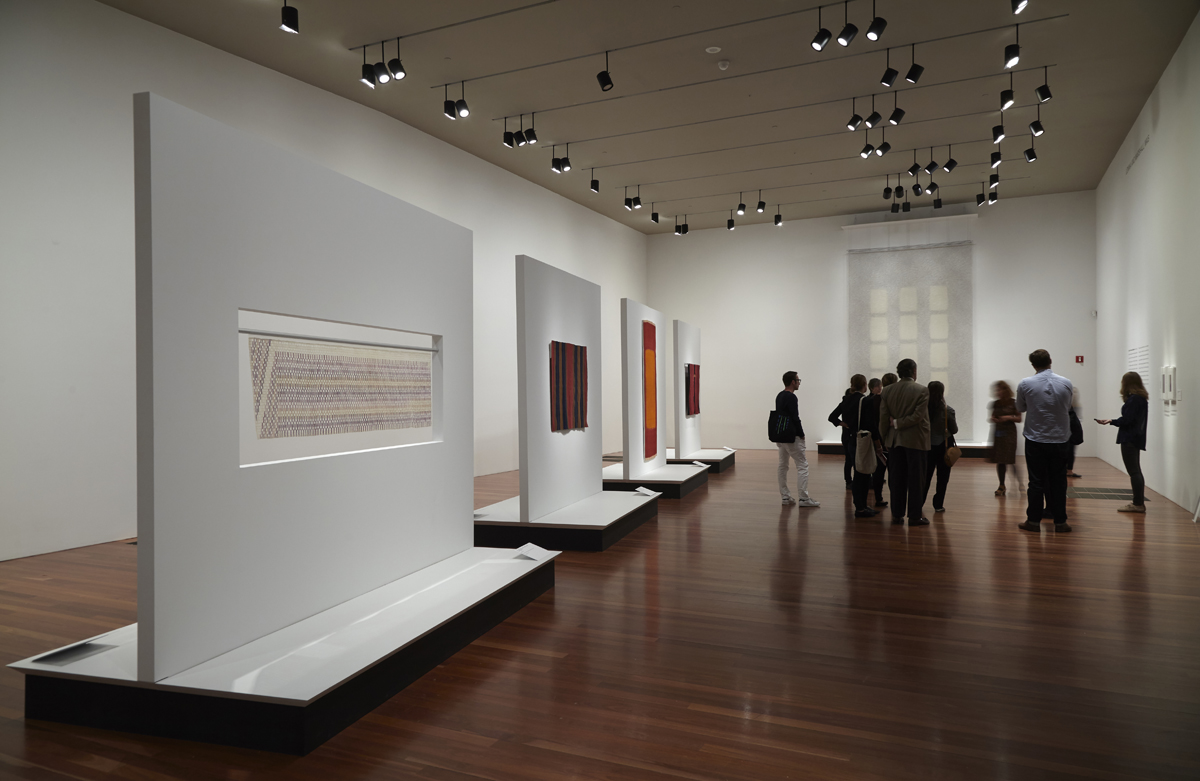
Some textiles on view, like an energetic Senegalese cotton skirt panel (pagne), featuring loosely aligned wax printed squares, embrace more freedom than we tend to associate with minimalism, loosening the borders of the oft-debated and sometimes casually used term.
